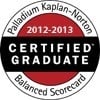Your marketing team’s browser is a maze of disconnected tools: email, social, analytics, all open in separate tabs—and none work together. This scattered tech setup wastes time, hides critical customer data, and actively hurts your bottom line. The real fix? Embrace marketing technology integration and bring order to the chaos.
Your team wastes time logging in and out of different systems, creating a frustrating work environment. Data lives in separate silos, so you never get the full picture of a customer or their interactions with your brand. Getting all this tech to work together simplifies your business, and proper marketing technology integration is how you get there.
Use Our Hubspot Inbound Marketing and Sales ROI Calculator to Find out the ROI you can Get From Using Hubspot Inbound Marketing and Sales Software.
The Growing Pile of Marketing Tools
It feels like a new marketing tool comes out every single day, and each one claims to be the magic bullet for your business. Before you know it, your martech stack is bloated with a dozen subscriptions, and none of them talk to each other. This is more than just an annoyance; it's actively costing you money and hindering your marketing efforts.
We analyzed a client's software spend recently and found they were paying for three different marketing automation tools. No one on the marketing team could remember why they signed up for two of them. That's money walking right out the door for no good reason, a common issue with unmanaged martech investments.

The obvious costs are the monthly subscription fees, but the hidden costs are what really hurt. Think about the time your team spends trying to manually move data between your martech tools. Or the frustration when a lead from your ad platform never makes it into your CRM, impacting your entire lead management process and creating a poor customer experience.
When 'Best of Breed' Just Creates a Monster
You've probably heard the advice to pick the 'best of breed' tool for every job. The best email tool, the best social media scheduler, and the best analytics platform all seem like smart choices. In theory, you get the top product for each specific task in your digital marketing strategy.
In the real world, this approach often builds a monster of a technology stack. You end up with a patchwork of systems held together with digital duct tape, facing constant compatibility issues. These tools don't communicate, creating a clunky experience for both your team and your customers due to inconsistent data formats.
I remember one company I worked with that had this exact setup. Marketing celebrated a huge number of leads, but sales complained the leads were junk. It turned out the system passing leads to the sales team was dropping crucial information because of integration flaws. This disconnect prevents a single customer view and is a classic symptom of a chaotic marketing tech stack.
The Case for an Integrated Marketing Platform
The solution to this mess isn't just another tool; it's a different approach. Instead of a dozen separate apps, what if you had one central system? This is the power of a true integrated marketing automation platform.
When everything lives under one roof, your martech ecosystem becomes manageable. Your website, CRM, email marketing, and sales pipeline are all connected. This isn't about limiting what your marketing team can do; it's about simplifying how they do it, so they can focus on growth.
Getting a 360-Degree View of Your Customer
When your systems are connected, you finally get a complete picture of your customer's journey. You can see every touchpoint, from their first website visit to the moment they signed a contract. This unified customer view is critical for effective marketing strategies and sales alignment.
Marketing can see which marketing campaigns are actually driving revenue and can better analyze data on campaign performance. Sales can see a lead's entire history before they even pick up the phone, improving their ability to build a customer relationship. This shared view stops the finger-pointing and helps marketing teams work together toward the same goal.
A customer data platform (CDP) often serves this function, collecting information from all your data platforms to create one complete profile. Good lead tracking systems make this possible, but only if they are part of a unified platform. Without this, understanding customer behavior and optimizing customer engagement is nearly impossible.
Make it Easy to Buy from You
Here's a simple truth I've learned over 25 years in sales: don't make it hard for people to give you money. A fragmented marketing technology stack creates friction for your customers. They have to repeat information, deal with confusing handoffs, and navigate a clunky process that degrades the customer experience.
I once helped a business implement an online quoting calculator on their website, and it was a huge win. Before, getting a price was a five-step process that involved two phone calls and an email chain. Now, a prospect could get an estimate in 60 seconds, which drastically improved their customer journey.
The number of qualified leads shot through the roof because we made it easy to buy. That kind of simple, powerful feature is only possible with a good martech integration strategy. The calculator fed leads directly into their HubSpot CRM, complete with all the details the sales team needed, creating a seamless experience for both the single customer and the business.
My Own Journey to a Simpler Tech Stack
Early in my consulting career, I fell into the same trap with my own tech stacks. I had one tool for my contacts, another for invoicing, and a third for scheduling. I spent hours every week just making sure my software tools were up to date, which was a huge drain on my time and energy.
The turning point came when I committed to using HubSpot for everything in my existing martech setup. It felt like a weight was lifted. Suddenly, my contacts, deals, calendar, and website were all in one place, streamlining my content creation and lead management.
I could focus on helping clients instead of fighting with my own software. This is what I now preach to my clients. Find a single, powerful platform that can do 80-90% of what you need and stop chasing shiny new objects. Simplicity is a competitive advantage in any company size.
How to Start Untangling Your Marketing Tools
Fixing your messy martech stacks might feel overwhelming, but you can get it done with a clear plan. You don't have to fix everything at once. Start by taking small, deliberate steps to regain control of your marketing technology include.
Here's a simple process you can follow:
- Conduct a Full Audit. Make a list of every single marketing and sales tool you pay for. Write down what it does, how much it costs, and who on your team uses it. You will almost certainly find software you're paying for but not using.
- Identify Your 'Single Source of Truth'. Where should all your customer data live? For most businesses, this should be your Customer Relationship Management (CRM) system. Your CRM is the heart of your operation and the foundation for a unified customer profile.
- Eliminate Redundancies. Look at your audit list. Are you paying for multiple automation tools that do the same thing? Pick one and get rid of the others, a step that often delivers the easiest savings.
- Map Your Customer Data Flow. Think about how a new lead moves through your business. This map of your integration process will show you the most critical martech integrations you need to fix.
- Choose Your Core Platform. After you understand your needs, you can choose an integrated platform to be your central hub. It should handle your most important functions, like CRM, email, and content management.
For functions not covered by your core system, look for an integration platform or dedicated integration tools. These can connect specialty applications to your central hub. The goal is a cohesive system where data flows freely, which enables companies to be more agile.
| Step | Action | Key Objective |
|---|---|---|
| 1. Audit | List all marketing and sales tools, their costs, and users. | Gain a clear picture of your existing martech stack and identify waste. |
| 2. Identify Source of Truth | Designate a primary system for all customer data, usually the CRM. | Establish a central data platform for a single customer view. |
| 3. Eliminate Redundancies | Cancel subscriptions for overlapping tools. | Reduce costs and simplify the martech ecosystem. |
| 4. Map Data Flow | Visualize how information moves between systems from lead to customer. | Pinpoint critical integration points and bottlenecks. |
| 5. Choose Core Platform | Select a central platform and plan integrations for specialty tools. | Build a functional and integrated technology stack. |
Don't Let Technology Get in the Way of Growth
Your technology should be a powerful helper, not a roadblock. A disorganized collection of tools creates confusion and slows you down, leading to an inconsistent customer experience. It makes it impossible to get the clean data you need to make smart business decisions and properly scale marketing operations.
The goal is to have the fewest systems you need to run your business effectively. For many businesses I work with, a single platform like HubSpot can replace five, ten, or even fifteen different apps. The result is a leaner, faster, and more profitable operation because it creates an effective martech environment where data is accessible.
Once your technology is sorted, your marketing teams can focus on the real work. With access to reliable data from tools like Google Analytics, you can optimize campaigns based on real performance. Tasks like budget control and ad planning become much simpler when you're not wrestling with your own customer data platforms.

Conclusion
That chaotic collection of marketing apps is holding your business back. The constant switching between tabs, the manual data analysis, and the lack of a clear picture are killing your team's productivity and hurting your bottom line. A strategic approach to marketing technology integration is no longer a luxury; it's a necessity for any business that wants to grow.
By choosing an integrated automation platform and simplifying your tools, you can finally get your marketing and sales teams on the same page. This allows you to improve the customer journey and create better customer experiences. A well-planned martech integration strategy is the foundation for scaling your business in today's competitive landscape.
We are a full-service Hubspot Certified Inbound Marketing and Sales Agency. In addition, we work to integrate your SAP System with Hubspot and Salesforce, where we have a deep delivery capability based on years of experience. Please our book a meeting service to get started.





